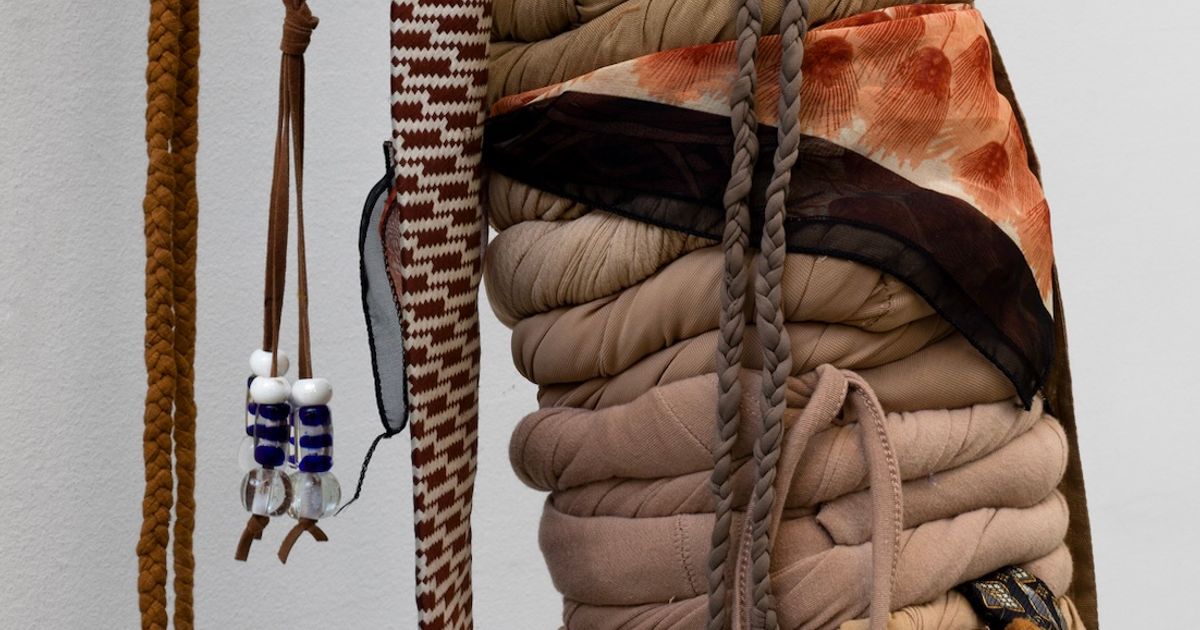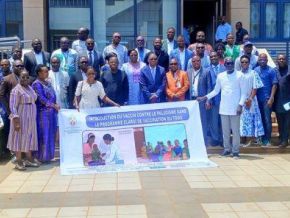to ignite our skin
Patricia Ayres, Elaine Cameron-Weir, Sarah Friend, Yu Ji, Mire Lee, Umico Niwa, Mimi Park, Ana Raylander Mártis dos Anjos, Sofía Sinibaldi, and Erik Tlaseca
September 18–December 22, 2025
Opening reception: Wednesday, September 17, 2025, 6–8pm
Artist program: Thursday, September 18, 2025, 6:30–8:30pm
Off-site performance with Onassis ONX: Artist’s Model by Sarah Friend: Friday, September 19, 2025, 6-8:30pm
Find Your Gremlin youth workshop with Umico Niwa: Saturday, October 18, 2025, 10:30am-1:30pm
Exchange Session with Mimi Park: Saturday, December 13, 2025, 1-3pm
to ignite our skin features newly commissioned and recent works from an international group of artists whose contributions, spanning sculpture, installation, photography, and architectural intervention, explore shedding as a condition of the body today, locating it as an act of transition, becoming, regeneration, and refusal.
Like a snake undergoing ecdysis or the peeling of a scab, the artworks embrace the image of replacing one’s own skin, with its opulent decay and raw vulnerability, navigating the uneasy tension between the intrinsic desire to evade capture through transformation and neoliberal-driven tech’s sinister demand for perpetual reinvention. Taking precarious sculpture as the departure point, the exhibition features works that are texturally layered and pieced together from a hybrid of materials weathered by or forged through the body: worn clothes, collected debris, scavenged organic matter, tattered construction material, remnants of military ware, or AI-generated—discarded, found, recovered, composed, and rewrought into embodiments of the in-between.
In Practice: Nadim Choufi
October 2–11, 2025
Opening reception and performance by Elsa Saade: Thursday, October 2, 2025, 5–8pm
A Dragon in the Halls of Diplomacy: Saturday, October 11, 2025, 4–5pm
Nadim Choufi’s work explores how ideals of progress manifest and seduce, and the price of such visions on the lives subjected to their realization. Through sculpture, film, and text, Choufi draws on visual and literary practices that oppose or complicate narratives of national and global progress. For Choufi’s project at SculptureCenter, he has produced a new publication, In the Face of the Dragon, in which he composed a cento poem from lines borrowed from Arab poets who transform themselves, their lovers, and their people into animals and natural elements, speaking through these tongues of love and resistance.
In Practice: Coco Klockner
October 18–December 22, 2025
Opening reception: Friday, October 17, 2025, 6–8pm
Coco Klockner’s practice moves between text, sound, sculpture, and architectural intervention, immersing viewers in site-responsive environments that probe the ways systems of representation are constructed. The forms that emerge in her work mirror and intersect the dynamics embedded in the structural concerns of transness, examining the terms through which its status is constituted. For SculptureCenter, she will present a new installation that uses light, packed earth, moisture, and vibration to resound an intimate encounter between lovers while exploring the conditions that shape language and desire.
Sara Deraedt: Someone else
October 18–December 22, 2025
Support
Generous support for to ignite our skin is provided by Zachary Arnold and Dalal Ani Arnold.
Special thanks to Tina Kim Gallery, LLANO, and Yehudi Hollander-Pappi.
In Practice is made possible by the Elaine Graham Weitzen Commissioning Fund for Emerging Artists, which supports the production of new work by artists selected from SculptureCenter’s annual open call.
Major support for the In Practice 2025 program is provided by the Pollock-Krasner Foundation. The In Practice program is supported in part by an award from the National Endowment for the Arts.
Generous support for In Practice is provided by Sarah Elson.
In Practice: Nadim Choufi is supported by the Mondriaan Fund, the public fund for visual art and cultural heritage.
to ignite our skin, Sara Deraedt: Someone else, and In Practice: Coco Klockner are supported by the Eva Hesse Initiative for New Sculpture.
Support for all of SculptureCenter’s work with artists from abroad is provided by the International Council: Anonymous, Stephen Cheng, Micki Meng, Yan Du, Thomas Berger, Antonio Murzi and Diana Morgan, Audrey Rose Smith and Vicente Muñoz, Füsun Eczacıbaşı – SAHA.
Leadership support for SculptureCenter’s exhibitions and programs is provided by Carol Bove, Barbara Gundlach, Anna-Maria and Stephen Kellen Foundation, and Teiger Foundation. Major support is provided by Richard Chang, Jill and Peter Kraus, Miyoung Lee and Neil Simpkins, Eleanor Heyman Propp, Jacques Louis Vidal, and The Andy Warhol Foundation for the Visual Arts. Generous support is provided by Candy and Michael Barasch, Libby and Adrian Ellis, Andrew Fine and David Andersson, Jane Hait and Justin Beal, Gabrielle Humphrey, Amy and Sean Lyons, David Maclean, Ronay and Richard Menschel, the May and Samuel Rudin Foundation, Inc., and Fred Wilson. Additional funding is provided by Lily Lyons, Charmaine and Roman Mendoza, Elizabeth and Matt Quigley, Katharine Ristich, Alexander S.C. Rower, Julien Sarkozy, Carla Shen, and Lisa Young and Steven Abraham.






